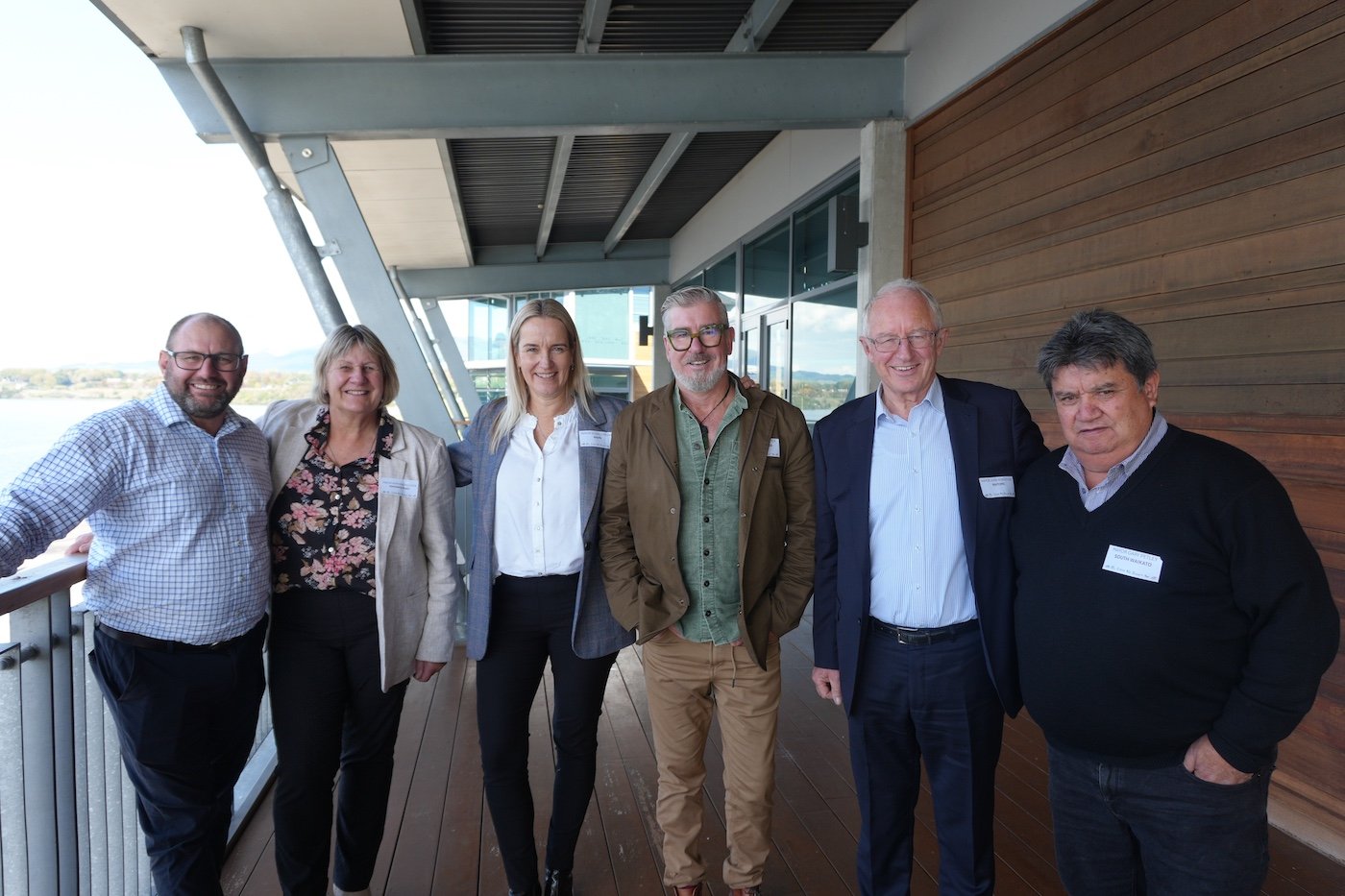Waikato Water Done Well elected member hui held in Karapiro
On 7 May, elected members from the seven councils who have been considering the Waikato Water Done Well (WWDW) model for future water service delivery, were invited to a hui to learn more about the proposed CCO.

Mayor Toby Adams (Hauraki), Mayor Adrienne Wilcock (Matamata-Piako), Mayor Susan O’Regan (Waipa), Mayor Max Baxter (Ōtorohanga), Mayor John Robertson (Waitomo), Mayor Gary Petley (South Waikato) at Karapiro hui – Waikato Water Done Well
Local Government Minister
The Minister of Local Government, the Hon Simon Watts, congratulated the councils for their demonstration of collaborative leadership at such scale.
“The leadership you are showing as a region provides a solid indication of the strength of your partnerships as councils, particularly in the context of City and Regional Deals and other infrastructure funding solutions.
The size and scale provided by Waikato Water Done Well enables you to be match-fit in terms of your current structure for delivering water services and sets you up for the future. You’re stronger together as a region, than as individuals,” he said.
Minister Watts acknowledged the important process of community consultation that is underway, and that final decisions on the WWDW model would not be made until this was completed for all seven councils.
Brad Olsen
The keynote speaker was Brad Olsen (Chief Executive and principal economist from Infometrics) who had undertaken an independent analysis of the financial modelling for WWDW.
Highlights of his presentation are provided below.
“Modelling shows that a CCO approach, bringing together water services across much of the region, can deliver water services at a lower per-household cost than going it alone.”
Infometrics has independently examined the Waikato Water Done Well and agrees the modelling is sound and the assumptions are reasonable and robust.
The status quo won’t cut it anymore. Or if it does, it will become increasingly expensive.
Cost increases over the past 10 years for consumer products (CPI) = 32%. This is 2.8% average increase per year.
Cost increases over the past 10 years for water and sewage systems = 52%. This is 4.3% average increase per year.
(And these costs are going to continue to increase at this rate – or higher – in coming years.)
Water assets are long-term assets – usually lasting 40-100 years.
Debt-funding is most appropriate for these as it spreads the cost over time rather than being paid up-front by current users.
Taking a group approach, and being able to draw in and use a catchment of assets – is most efficient and critical for ongoing success.
Collaboration means the value of work on offer is larger, giving a CCO more leverage to negotiate with suppliers.
Together, the councils have 40% of the population of the Waikato. Alone, each council has variably between 2 and 12% of the population.
A large percentage will always trump smaller percentages when it comes to negotiating contracts, attracting and retaining skilled staff, planning investment, pooling resources, and responding to regulations.
The Waikato Water Done Well CCO Model:
1. Meets government requirements
2. Allows for better collaboration
3. Means stronger negotiating power
4. Enables costs to be spread over time (and users over time)
5. Allows water infrastructure to be debt financed
Most importantly: it saves money
Join our Newsletter
If you would like to receive updates from the Waikato Water Done Well Programme Team then please subscribe below.